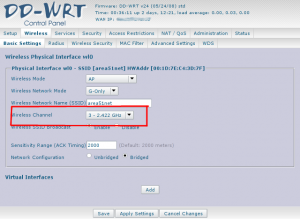Last week, my Internet service was switched from New Wave Communications to HES Energynet. Even though New Wave promised 1.5 megabits for our tier of service it only rarely met that level. Many times downloads would stall for no apparent reason. It is possible that some fault lies with my wireless router. Like I will explain later, using wireless means the user is subject to every form interference possible. However, I keep a close watch on the strength of my wireless signal and my connection was steady each time a download stalled while using New Wave. I do believe New Wave is making a sincere effort to improve their service. Larry Hoyle is the local manager for Hopkinsville and he appears regularly in commercials begging for customer feedback.
However, the power of Mr. Hoyle’s persuasion wasn’t enough to keep us from switching. Energynet promises 3 Megabits for their service which was enough to convince us to try it. Some basics to understand about the Energynet service is that it uses standard 802.11G technology. Any home router at OfficeMax, etc will support the G standard. Retail routers however have to be plugged into the wireless bridge provided by HES. The encryption used by Energynet prevents casual unauthorized access but it will not prevent knowledgable individuals from capturing private data. As wireless home routers become more common interference from your neighbor will become more difficult to avoid.

The Wifi standard allows a total of 14 channels but only 11 of these are legal to use in the United States (Ch. 1-11). When setting up a new router it is helpful to change the channel to something other than the default. It is especially important to set the channel different from what Energynet uses or else both routers will step on each other during high traffic periods.
Picking a clear channel is made easier if your able to use software like Kismet that will show all the active wireless networks in the area, ncluding ones that are hidden from normal view.
In these early days of my experience with Energynet, so far I am very satisfied with the speed I get. However, Energynet will suffer from the same faults of a crowded 2.4 Ghz band that includes routers, wireless phone handsets, and microwave ovens.